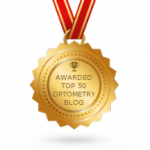
We've all experienced this; you get all ready for bed, and you turn the lights off, but you just can't seem to doze off. You open your eyes and find yourself enveloped in darkness. After a few moments you are able to distinguish between the objects in the room and the darkness around you. This process is known as ''dark adaptation''.
A person with a healthy set of eyes probably takes night vision - and the biochemical, physical and neural mechanisms - for granted. How do our eyes operate in the dark? Let's begin by having a closer look at the eye and its anatomy. The retina is a layer of cells at the back of the eye. The section of the retina directly behind the pupil which produces the point of focus is called the fovea. The retina is made up of cone cells and rod cells, named for their respective shapes. The rods have the capacity to function even in low light conditions. They are not found in the fovea. You might already know that the details and colors we see are sensed by cone cells, while the rods are sensitive to light.
Now that you know some background, let's relate it to dark adaptation. If trying to find something in the dark, like the edge of the last stair in a dark basement, you'll be better off if you look at something next to it. When you do that, you use the part of the eye that has rods, which, as mentioned above, are more responsive to light, even if there isn't much of it.
Another method by which your eye responds to the dark is by your pupils dilating. Your pupil grows to it its largest diameter within 60 seconds; however, your eyes will continue to adapt over a half hour period.
Here's an example of dark adaptation: when you exit a bright area and enter a dim one, for example, when coming inside after spending time in the sun. Despite the fact that it takes several moments to adapt to the dark, you will immediately be able to re-adapt upon re-exposure to bright light, but if you go back into the darker setting, your eyes will need time to re-adjust again.
This is actually one reason behind why so many people prefer not to drive when it's dark. If you look right at the lights of opposing traffic, you may find yourself momentarily unable to see, until you pass them and your eyes once again adjust to the night light. To prevent this, try not to look directly at headlights, and instead, use your peripheral vision to observe oncoming traffic at night.
If you're finding it challenging to see at night or in the dark, call us to schedule an appointment with our doctors who will see if your prescription needs updating, and eliminate other reasons for worsened vision, such as cataracts and macular degeneration.




